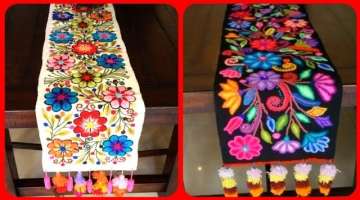Endangered Salamander Spotted In Turkey
The salamanders that belong to the Triturus group are common in the northern half of the world. Eight of their species live in Europe and seven in the United States. Its species in Asia are numerous. Here, detailed information about salamander.
- 1 | 6

It is the general name given to the amphibians with long body, four legs and tail that enter the Semendergiller family. It lives in Northwest Africa, South-Central Europe, Syria and Anatolia. Its length reaches 20 cm, and sometimes 30 cm. The skin is plain and black, covered in two longitudinal rows or irregular yellow hues. The lower part is blackish gray and covered with dirty greenish yellow spots. It has a blunt body, a broad head, a short tail, a very large diaper in the ear area, and a row of swabs and warts on the back.
- 2 | 6

Salamanders likes shady and moist places; Often the night comes alive and hunts. Mating takes place either in the spring or summer in shallow water or in moist soil. The female carries the seed bag until the next spring, about 20-40 cubs remain for about 6-9 months. It burns my secretive gland secretions in danger.
- 3 | 6

The main types are: Alpine Salamander, Caucasian Salamander, Luschan Salamander, Spotted Salamander, Water Salamander. Water Salamanders reproduce by spawning. There are about 20 types. Well-known: Marble salamander, scalloped salamander, saffron salamander, Taurus salamander, common salamander, mountain suspenders.
- 4 | 6

Salamanders, (Lat Salamandridae) A family of the class of amphibians from the vertebrates, entering the team of tails. They live in Europe, Asia and Africa. It includes Alpine salamander, lungless salamander, Caucasian salamander and bipolar ones. These animals have an internal fertilization. They have long, cylindrical somewhat blunt bodies, 4 well-developed legs and a round tail, flat and cloth-rich skins. It has longitudinal palate teeth and ciliated eyes.
- 5 | 6

Lebanon, Syria, Iran, Iraq, and next to Israel, Turkey also known salamander lived, supported by Adıyaman University of Adıyaman province of frogs' says project Assoc. Dr. The first time he lived in Adıyaman by Mehmet Zülfü Yıldız and his team was identified in 2018 and announced to the world of science.
- 6 | 6

Salamandra infraimmaculata, called Stained Salamander was seen in the Gölbaşı District of Adıyaman. Semender, who lives in the Eastern Mediterranean, Eastern Anatolia and Southeastern Anatolia Regions, aroused curiosity among the citizens who saw it in a resting facility on the Gölbaşı-Malatya highway. It is stated by the International Organization for Nature Conservation (IUCN) that a Salamander in the NT (Near Threatened = endangered) category may be endangered in the near future.



















